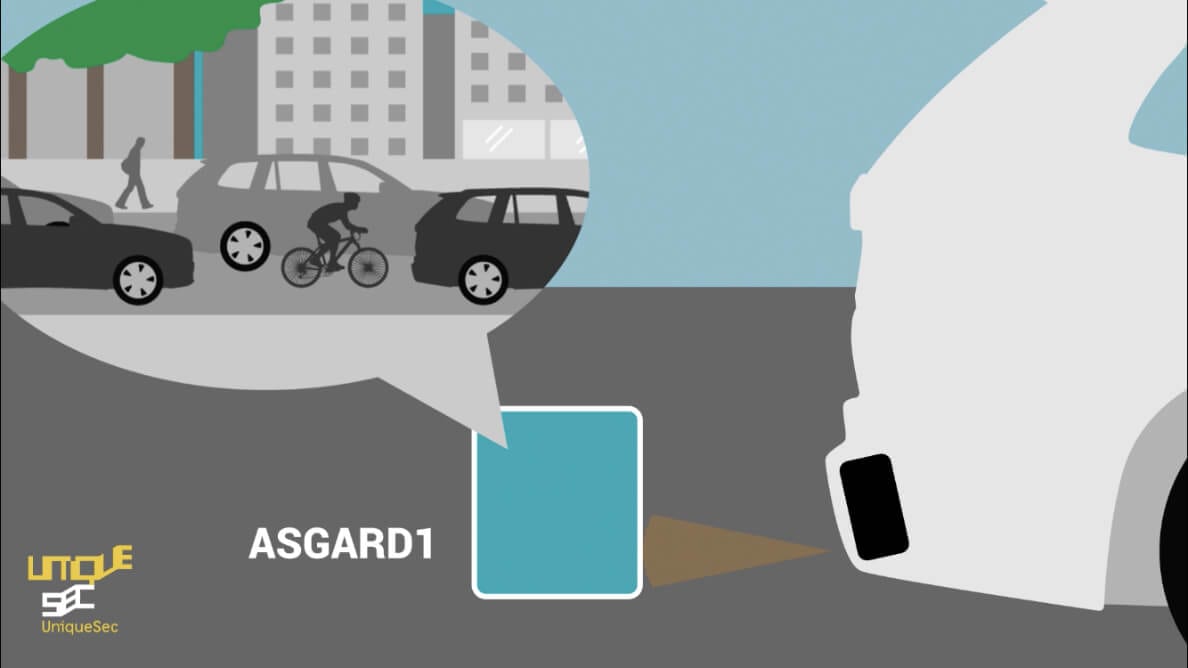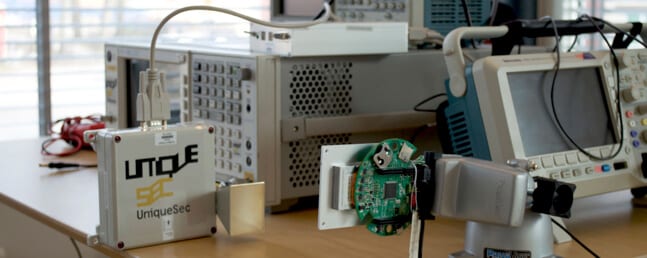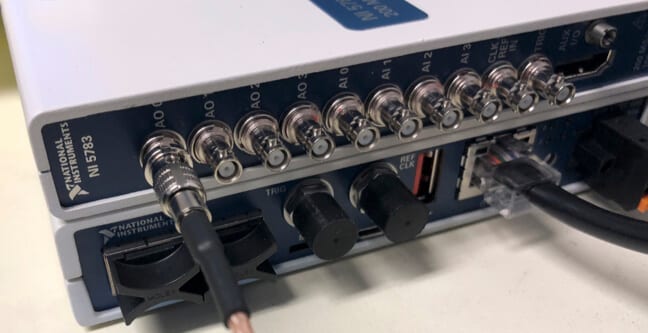UniqueSec ASGARD1
Radar test and verification solution based on FlexRIO and LabVIEW FPGA
The Challenge
ASGARD1 is a unique radar test and verification solution. The system sits in front of the vehicle or radar under test and emulates electromagnetic emissions analogous to
The ASGARD1 radar test and verification solution
In the process of creating a prototype implementation of ASGARD1,
Figure 1. Car radar detects objects simulated by the ASGARD1 system
” WireFlow delivers efficient LabVIEW FPGA development on time.”
– Kasra Haghighi, Founder
The Solution
To take on the challenge of designing a powerful and scalable prototype for the ASGARD1 radar test solution,
For the prototype, they decided to use National Instruments FlexRIO together with LabVIEW Real-Time and LabVIEW FPGA. This platform would give the project a powerful tool to quickly design a prototype that could prove the concept of the ASGARD1.
The user of an ASGARD1 system creates test scenarios in a virtual traffic simulator. Scenarios can be set in details by specifying:
• Number and types of vehicles, pedestrians, and other road users
• Road and traffic situations
• Environment elements such as guardrails and trees
• Weather conditions
Figure 2. Block diagram of the radar test and verification solution
The ASGARD1 performs an analytic signature generation for the elements defined in the traffic simulator. After
Figure 3. Lab setup of a radar and the ASGARD1 RF frontend
For the





